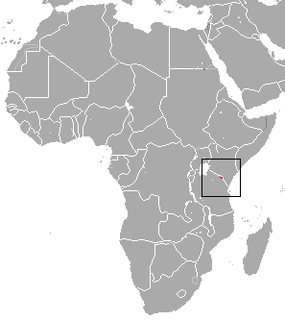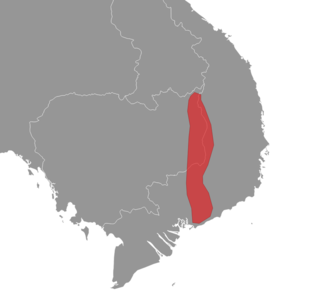
The genus Crocidura is one of nine genera of the shrew subfamily Crocidurinae. Members of the genus are commonly called white-toothed shrews or musk shrews, although both also apply to all of the species in the subfamily. With over 180 species, Crocidura contains the most species of any mammal genus. The name Crocidura means "woolly tail", because the tail of Crocidura species are covered in short hairs interspersed with longer ones.

The Peters's musk shrew is a species of mammal in the family Soricidae. It is endemic to Tanzania.

Jenkins's shrew is a critically endangered species of mammal in the family Soricidae. It is endemic to South Andaman Island in India.

The Sulawesi shrew is a species of mammal in the family Soricidae. It is endemic to the central and northern provinces of Sulawesi in Indonesia. It is a fairly common species and the International Union for Conservation of Nature has assessed its conservation status as being of "least concern".

The Somali dwarf shrew is a species of mammal in the family Soricidae. It is found in Ethiopia and Somalia. Its natural habitat is subtropical or tropical dry lowland grassland.

The black-footed shrew is a species of mammal in the family Soricidae. It is endemic to northern and central Sulawesi, Indonesia where it lives on the floor of the tropical forests. The International Union for Conservation of Nature has assessed its conservation status as being of "least concern".

The Sulawesi white-handed shrew or Temboan shrew is a species of mammal in the family Soricidae. It is endemic to the island of Sulawesi in Indonesia. It is a fairly common species and the population seems stable so the International Union for Conservation of Nature has assessed its conservation status as being of "least concern".

The Cretan shrew is a species of mammal in the family Soricidae. It is endemic and exclusive to the island of Crete, Greece. Its natural habitat is temperate shrubland, and the animal is threatened by habitat loss. It is found in the mountainous highlands of Crete, having been displaced from lower altitudes by the lesser white-toothed shrew.

Crocidura phanluongi is a species of shrew in the genus Crocidura from southern Vietnam and nearby Cambodia. It is a somewhat small, gray shrew with an ecologically diverse distribution.

The Kinabalu shrew is a species in the family Soricidae. It is endemic to the mountain Mount Kinabalu on Borneo, and its sister peak, Mount Tambuyukon.

The Negev shrew, also known as the Ramon's shrew is a species of mammal in the family Soricidae. So far, it is only known from Israel. It is found in three regions: Mizpe Ramon and Sede Boqer in the Negev Desert, and Sartaber at the northern edge of the Judean Desert. It is likely that the species occurs more widely in the region than currently known. The three locations in which the species occur are rocky desert areas at altitudes between 200 and 950 metres above sea level. The Negev shrew is light gray with a slightly lighter underpart. It is also relatively small.
The Chinese white-toothed shrew is a species of mammal in the family Soricidae.

The Taiwanese gray shrew is a species of mammal in the family Soricidae. Previously believed to be endemic to Taiwan, it is now also known to occur in Vietnam.
Crocidura guy is of species of shrew from Northeastern Vietnam, Viet Bac karst formation.
Gathorne Gathorne-Hardy, 5th Earl of Cranbrook,, styled Lord Medway until 1978, is a British zoologist, biologist, naturalist, and peer. Since 1956, he has been active in the fields of ornithology, mammalogy, and zooarchaeology, and has influenced research and education in Southeast Asia. His career focus was on the tiny birds that build edible nests.

The Indochinese shrew is a species of white-toothed shrew native to Southeast Asia. It was first identified in 1922 by Herbert C. Robinson and C. Boden Kloss. The species is often taxonomized as a subspecies Horsfield's shrew, but bears a different range, occurring in Myanmar, Vietnam, and the Yunnan province of China. C. indochinensis is on the smaller end of shrews, with dark brownish gray fur and a long, slender tail.
The Javan hidden shrew or Javan long-tailed shrew is a species of mammal in the family Soricidae. It is endemic to the island of Java in Indonesia.
The Ivory Coast white-toothed shrew is a species of mammal in the family Soricidae. It is native to the Ivory Coast, Liberia, and Guinea.
Sokolov's shrew is a species of mammal in the family Soricidae. It is endemic to Vietnam.
Mikhail Zaitsev’s shrew is a species of mammal in the family Soricidae. It is endemic to Vietnam.













